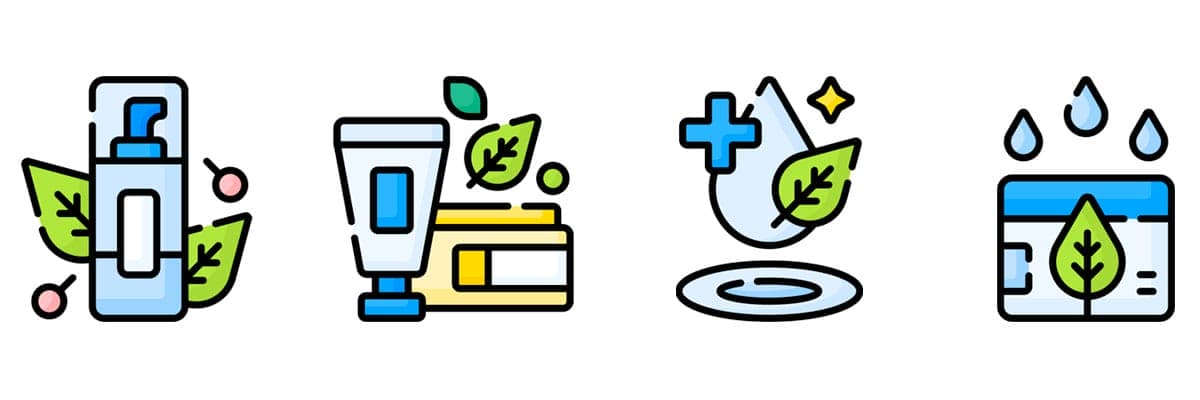Skincare
The Ubiquity of Glycerin in Skin Care Products
If you click on links we provide, we may receive compensation.
Glycerin, also known as glycerol, is a common ingredient found in a wide range of skin care products, from moisturizers and serums to face masks and cleansers. Its prevalence is not just a trend but a reflection of its fundamental role in skin care formulations. Glycerin is favored by dermatologists and skin care experts for its proven benefits and versatility in treating various skin types and conditions.
Understanding Glycerin and Its Skin Benefits
Glycerin is a colorless, odorless liquid that is soluble in water. It is a humectant, which means it can attract water from the air into the skin’s outer layer. This property helps in maintaining the skin’s hydration levels. Besides hydration, glycerin also creates a protective barrier on the skin, which aids in preventing moisture loss. Its gentle nature makes it suitable for all skin types, including sensitive and acne-prone skin. By drawing moisture to the top layer of the skin, glycerin helps to improve the skin’s texture, making it smooth and supple.
Why Glycerin Is a Staple in Skin Care Formulations
Manufacturers incorporate glycerin into their products not only for its direct benefits but also for its role in enhancing the performance of other ingredients. Glycerin works synergistically with emollients and oils to enhance their moisturizing effects. It also aids in the delivery of active ingredients deeper into the skin, making products more effective. The versatility of glycerin allows it to be used in both high-end and drugstore products, making it accessible to a wide audience.
The Impact of Glycerin on Skin Hydration
A significant statistic that underscores the effectiveness of glycerin is its impact on skin hydration levels. According to a study published in the Journal of the American Academy of Dermatology, glycerin was found to significantly increase skin hydration when assessed 24 hours after application. This study highlights glycerin’s capacity to not only draw moisture into the skin but also retain it, which is crucial for maintaining the skin’s health and appearance. The full study can be accessed here: Journal of the American Academy of Dermatology.

Glycerin’s Compatibility with Other Skin Care Ingredients
One of the reasons glycerin is so widely used in skin care is its ability to work harmoniously with other ingredients. It does not interfere with active ingredients like retinoids, antioxidants, or peptides, making it an excellent addition to any skin care routine. Glycerin’s compatibility ensures that it can be included in formulations that target specific concerns such as aging, acne, or hyperpigmentation without diminishing the efficacy of other components.
Addressing Common Misconceptions About Glycerin
Despite its many benefits, there are some misconceptions about glycerin that can cause confusion. For instance, some people believe that glycerin can be overly hydrating and thus exacerbate acne. However, research shows that glycerin hydrates skin without clogging pores, which is essential for acne-prone skin types. Its non-comedogenic properties ensure that it provides moisture without contributing to acne.
How to Choose Products with Glycerin
When selecting skin care products containing glycerin, it’s important to look at the overall formulation. Products that pair glycerin with complementary hydrating ingredients like hyaluronic acid or ceramides can offer enhanced moisturization benefits. It is also advisable to choose products that are well-suited to your skin type and concerns. For example, those with dry skin might opt for a richer, more emollient cream with glycerin, while those with oily skin might prefer a lighter lotion or gel.

Source: Moisture retention of glycerin solutions with various concentrations: a comparative study © The Author(s) 2022
Glycerin helps prevent transepidermal water loss (TEWL) by acting as a powerful humectant, attracting water from both the environment and deeper layers of the skin to the outermost layer, the stratum corneum. This increased hydration supports the skin’s natural barrier function, making it more effective at retaining moisture and resisting water loss. By softening the skin and filling in microscopic cracks in the surface, glycerin helps to create a smoother, more resilient barrier that reduces moisture evaporation. Additionally, it interacts with lipids in the skin to stabilize and maintain their structure, further enhancing the barrier’s ability to lock in hydration. Through these combined actions, glycerin not only keeps the skin hydrated but also protects it from environmental stressors that can contribute to TEWL.
The Future of Glycerin in Skin Care
As research continues to reveal more about the skin’s hydration needs and the ingredients that best meet these needs, glycerin’s role in skin care products is likely to grow. Its ability to not only attract but also retain moisture is invaluable in an industry where efficacy and results are paramount. Moreover, as consumers become more educated about the ingredients in their skin care products, the demand for simple, effective, and non-irritating components like glycerin will likely increase.
Glycerin remains a cornerstone in skin care formulations for good reason. Its proven hydration benefits, compatibility with other ingredients, and suitability for all skin types ensure it will remain a go-to ingredient for formulators and consumers alike. Whether you’re dealing with dry skin, looking to improve skin texture, or simply aiming to maintain healthy skin, glycerin-based products can be a beneficial addition to your skin care routine.




